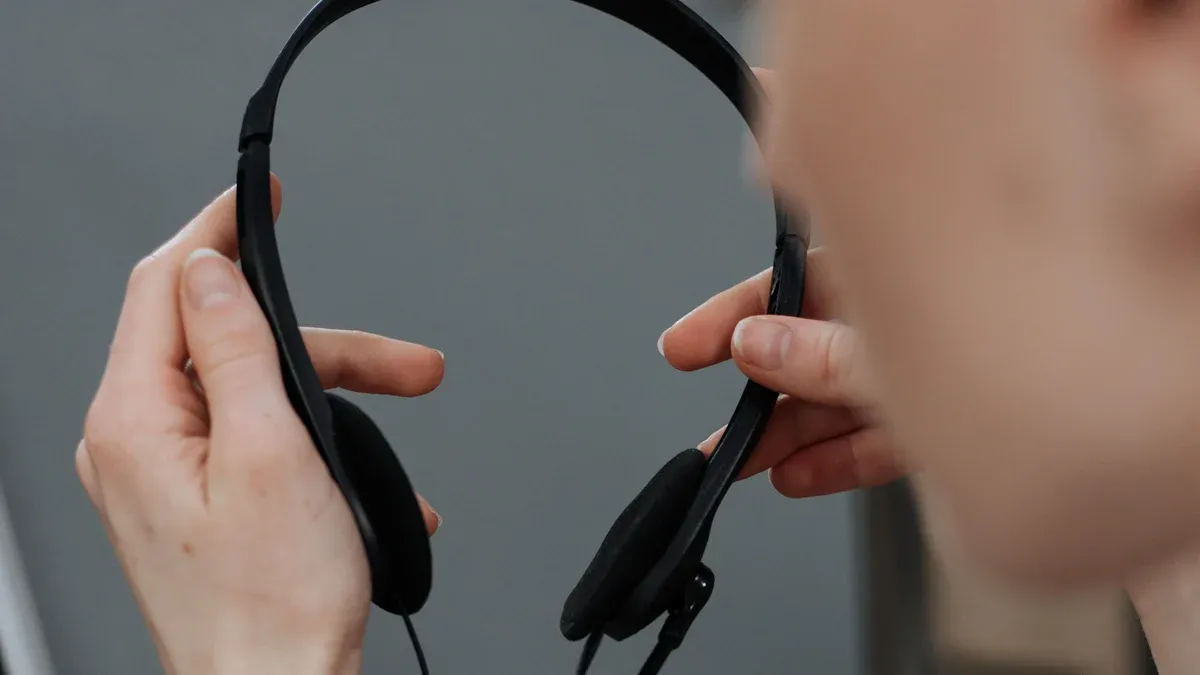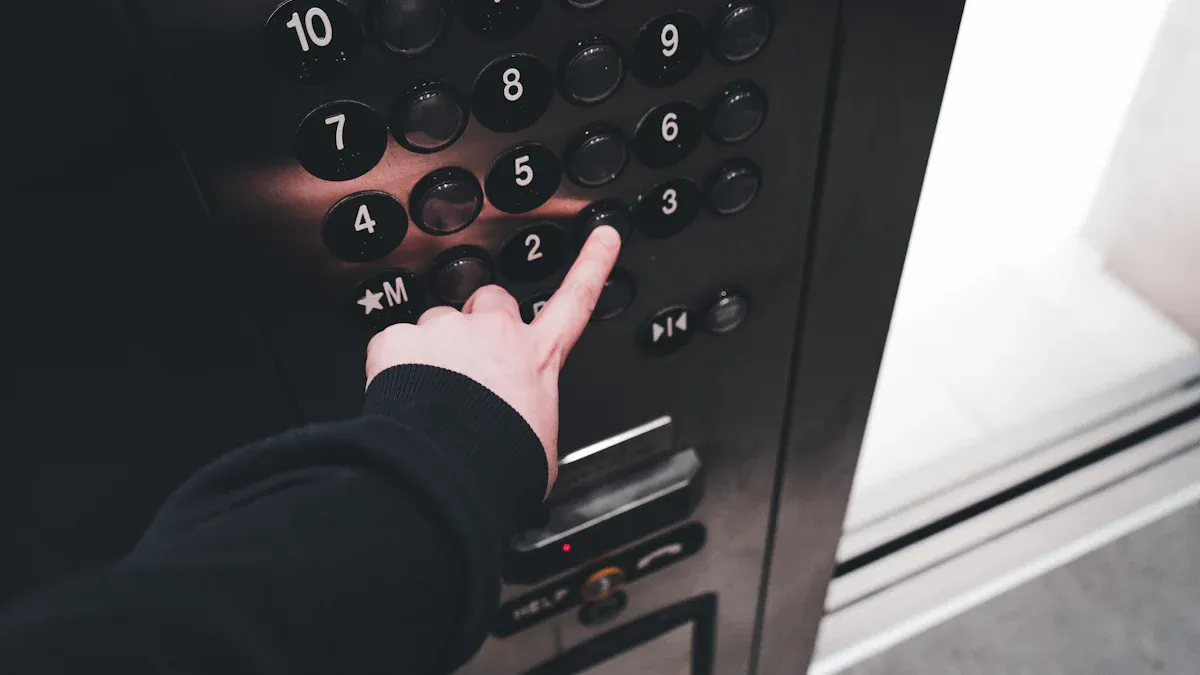
Elevator communication systems face rapid change in 2025. The 2025 NFPA 72 code now requires a trouble signal within 200 seconds after any failure, prompting upgrades from stainless steel elevator telephone models to handsfree elevator telephone solutions. Apartment elevator telephone and IP elevator telephone options also reflect the growing market and stronger safety standards.
Why the Shift to Cellular Handsfree Elevator Telephone Systems in 2025
Regulatory Compliance and Code Updates
Regulatory agencies have updated elevator safety codes to address modern communication needs. The ASME elevator code now requires a minimum 4-hour battery backup for emergency phones. Phone line verification alarms must alert onsite staff if the communication line fails. Systems must also provide caller location identification without user input. These changes ensure that emergency calls from elevators reach responders, even during power outages or network failures.
Over 80,000 emergency phones now use LTE cellular solutions that meet or exceed these requirements. Leading providers, such as Kings III, offer FirstNet®-capable systems that enhance emergency communication reliability and security.
The phase-out of POTS lines and the lack of clear FCC regulations on copper line retirement have pushed building owners to adopt cellular solutions. These systems help properties comply with new codes and avoid penalties.
End of Traditional Landlines and POTS Switch-Off
The decline of traditional landlines has accelerated the shift to cellular elevator communication. Several trends highlight this transition:
- Landline use in businesses dropped by 36% from 2010 to 2018.
- POTS service costs increased by 36% over the last decade and may rise by up to 75% in the next five years.
- Fixed telephone subscriptions have steadily fallen since 2009.
- The FCC in the US has mandated the replacement of POTS lines with alternative services.
- Telefonica plans to shut down the entire Spanish copper network by March 2026.
The elimination of analog POTS lines creates safety concerns for systems that still rely on them, such as elevator emergency phones. As these lines disappear, building managers increasingly choose cellular or VoIP solutions to maintain reliable emergency communication and meet evolving regulations.
Demand for Enhanced Safety and Reliability
Safety and reliability remain top priorities for elevator communication systems. The COVID-19 pandemic increased awareness of hygiene and the need for touchless solutions. Modern handsfree elevator telephone systems support voice commands, smartphone apps, gesture recognition, and proximity sensors. These features reduce physical contact and improve user experience.
The market for handsfree elevator telephone solutions continues to grow. The table below shows key industry trends:
| Metric | 가치/설명 |
|---|---|
| 시장 규모 (2024) | Approximately USD 2.12 billion |
| Projected Market Size (2033) | Approximately USD 3.99 billion |
| Compound Annual Growth Rate | 7.6% CAGR from 2025 to 2033 |
| Forecast Period | 2025 to 2033 |
| Key Market Drivers | Hygiene awareness, technological advancements, smart building integration, urbanization |
| Technology Features | Voice commands, smartphone apps, gesture recognition, proximity sensors enabling handsfree use |
| Impact of COVID-19 | Accelerated demand due to heightened hygiene and safety concerns |
| Primary Application Areas | High-traffic locations such as office buildings, hospitals, public transportation hubs |
| Leading Industry Players | KONE, Schindler, ThyssenKrupp investing heavily in R&D for innovative handsfree technologies |
| Challenges | Installation complexity, maintenance costs, reliability issues |
Major elevator manufacturers invest in research and development to improve handsfree elevator telephone technology. These efforts help ensure that 비상 통신 remains reliable, even as building infrastructure evolves.
Core Features of Cellular Handsfree Elevator Telephone Solutions

Real-Time Two-Way Communication
Cellular handsfree elevator telephone systems deliver instant, clear conversations between passengers and emergency responders. These systems use advanced AI algorithms to ensure fast and accurate communication. The table below shows how different algorithms perform in smart elevator environments:
| Algorithm | Speed (fps) | Accuracy (%) | Energy Consumption (J) |
|---|---|---|---|
| YOLO | 제일 높은 | 제일 높은 | 가장 낮습니다 |
| Faster R-CNN | Lower | Moderate | Higher |
| SSD | Moderate | Moderate | Moderate |
| Mask R-CNN | 가장 낮습니다 | High | 제일 높은 |
YOLO stands out for its speed and efficiency, making it ideal for real-time emergency calls. Fast response times help keep passengers safe during critical situations.
Remote Monitoring and Diagnostics
Remote monitoring gives building managers powerful tools to keep elevators running smoothly. These features include:
- Continuous diagnostics that spot problems early and reduce downtime.
- VoLTE-based technology for better call quality and faster connections.
- Reliable cellular networks that support uninterrupted emergency calls.
- Remote troubleshooting and updates, which cut down on on-site visits.
- Clearer calls and quicker connections for improved passenger safety.
- Digital systems that allow voice and data to travel together, enabling real-time updates.
- Future-proofing as old copper networks disappear.
With these tools, a handsfree elevator telephone system can alert staff to issues before they become emergencies.
Integration with Smart Building and IoT Platforms
Modern elevator telephones connect easily with smart building and IoT platforms. This integration allows elevators to share data with other building systems, such as security and fire alarms. Building managers can monitor elevator status, receive alerts, and even control some functions remotely. These features help create safer, more efficient buildings that meet the needs of today’s tenants.
Benefits of Cellular Handsfree Elevator Telephone Adoption
Improved Emergency Response and ADA Compliance
Cellular handsfree elevator telephone systems help emergency responders reach people faster. These systems connect directly to emergency services, which reduces wait times during critical situations. Many models support features like automatic location identification. This helps responders know exactly where help is needed. These systems also meet ADA requirements by offering handsfree operation, voice prompts, and clear audio. People with disabilities can use the elevator phone without needing to press buttons or hold a handset.
Note: ADA compliance is not just a legal requirement. It also improves safety and accessibility for everyone in the building.
Reduced Maintenance and Downtime
Building managers often face high costs and delays when maintaining old elevator phones. Cellular solutions reduce these problems. Remote monitoring tools allow technicians to check system health from anywhere. They can fix many issues before they cause a breakdown. This reduces the number of emergency repairs and keeps elevators running smoothly. Fewer service calls mean less downtime for tenants and visitors.
Future-Proofing Building Infrastructure
Technology changes quickly. Cellular handsfree elevator telephone systems help buildings stay up to date. These systems work with new networks and smart building platforms. They do not rely on old copper lines, which are being phased out. Upgrading now prepares buildings for future code changes and new technology. Owners can avoid costly upgrades later by acting early.
Challenges and Considerations for Handsfree Elevator Telephone Upgrades
Installation and Upgrade Costs
Building owners often face high upfront costs when installing new elevator communication systems. Labor, hardware, and cellular service fees can add up quickly. Many companies offer financing or leasing options to help manage these expenses. Some buildings may need electrical upgrades or new wiring, which can increase the total cost. Owners should request detailed quotes and compare several vendors before making a decision.
Tip: Planning upgrades during scheduled maintenance can reduce installation costs and minimize elevator downtime.
Compatibility with Existing Elevator Systems
Not all elevators support modern communication technology. Older models may require special adapters or even partial replacement of control panels. Technicians must check the elevator’s age, wiring, and control system before starting the upgrade. Some systems may need software updates to work with new telephones. A compatibility checklist helps avoid surprises during installation.
| 호환성 요인 | Possible Solution |
|---|---|
| Old wiring | Use adapters or rewiring |
| Outdated controls | Upgrade control panels |
| Software issues | Install updates |
Ongoing Maintenance and Network Reliability
Cellular elevator phones need regular testing to ensure they work during emergencies. Building managers should schedule monthly checks and keep records of all tests. Network outages or weak signals can affect call quality. Choosing a provider with strong coverage in the building’s area helps reduce these risks. Some systems send automatic alerts if they detect a problem, allowing for quick repairs.
Note: Reliable 비상 통신 depends on both the hardware and the cellular network.
Technology Trends Shaping Handsfree Elevator Telephone Systems in 2025
IoT, 5G, and Edge Computing Integration
Elevator communication systems now benefit from IoT, 5G, and edge computing. Companies like GXC and 10T Solutions deploy private 5G networks and edge infrastructure to support elevators in smart buildings. These networks provide fast, secure, and reliable connections. 5G technology supports up to one million IoT devices per square kilometer, making it ideal for large buildings with many elevators and sensors. Edge computing processes data close to the elevator, reducing delays and enabling real-time decisions. The table below highlights the impact of these technologies:
| Statistic / Metric | 이름 * | Impact on Elevator Communication Systems |
|---|---|---|
| 5G supports up to 1 million IoT devices per sq km | High device density support | Reliable connectivity for many sensors |
| 5G speeds up to 100x faster than 4G | Real-time analytics | Instant status updates and rapid response |
| Edge computing reduces processing time by up to 80% | Local data processing | Faster decisions for control and maintenance |
These advances help elevators operate safely and efficiently, even during emergencies.
AI-Driven Predictive Maintenance and Data Analytics
AI and data analytics transform elevator maintenance. Companies use IoT sensors and cloud platforms to monitor parts like motors and doors. These systems predict problems before they cause breakdowns. For example, ThyssenKrupp uses machine learning to analyze sensor data and spot issues early. Technicians can fix problems remotely, which reduces emergency repairs and lowers costs. Teams complete scheduled maintenance faster and with fewer errors. Regular calibration keeps sensors accurate, improving reliability. The table below shows measurable benefits:
| Benefit Category | Measurable Impact / Savings |
|---|---|
| Reduction in Unplanned Downtime | 30–50% fewer emergency repairs |
| Extended Asset Lifespan | 20–30% longer intervals between replacements |
| Labor Optimization | 15–25% reduction in overtime and call-outs |
Tip: Start with high-value assets and monitor key performance indicators to get the best results from predictive maintenance.
Enhanced Security, Privacy, and Touchless Operation
Security and privacy remain top concerns for elevator systems. Modern solutions use encrypted communication and secure networks to protect data. 5G and IoT platforms offer strong safeguards against cyber threats. Touchless operation features, such as voice commands and gesture controls, reduce the need for physical contact. These features improve hygiene and user experience, especially in high-traffic buildings. Public safety devices now achieve 90% more uptime with 5G, ensuring that emergency calls always go through.
Impact of Handsfree Elevator Telephone Systems on Safety and Compliance

Meeting Updated Safety Codes and Standards
Elevator safety codes continue to evolve. Building owners must ensure their emergency phones meet strict requirements. Many solutions now comply with the ASME A17.1 Safety Code. These systems include a 4-hour battery backup, which keeps phones working during power outages. They also feature phone line verification alarms that alert staff if the connection fails. Some models provide caller location identification, so emergency responders know exactly where to go.
- Kings III cellular elevator phones meet and often exceed these standards.
- The Kings III M90 cellular dialer is FirstNet Ready®, which means it meets high standards for reliability and security.
- ETL Listed Central Stations support code-compliant emergency help phone solutions.
- ADA compliance is achieved with hands-free phones installed at the correct height and with easy-to-use features.
Regular testing and maintenance help ensure that emergency phones pass inspections and work when needed.
Ensuring Reliable Emergency Communication
Reliable emergency communication saves lives. Modern elevator phones use commercial-grade equipment designed for emergencies, not consumer use. These systems support both visual and audio signals to confirm calls and phone functionality. Ooma AirDial, for example, supports E-911 alerting by providing the physical address during an emergency call.
- Remote Device Management lets property owners monitor connection status.
- Alerts notify staff when someone places an emergency call.
- Accessibility features allow people to use the phone without manual dexterity.
Proper installation and ongoing monitoring help keep emergency communication systems ready for any situation.
Building owners and facility managers gain safer, more reliable elevators by adopting cellular solutions. These upgrades help meet new codes and prepare buildings for future technology.
Proactive planning ensures compliance and protects tenants.
Key considerations include installation costs, compatibility, and ongoing maintenance.
제품 정보
What happens if the cellular network goes down during an emergency?
Most systems include battery backup and automatic alerts. They switch to alternative networks or notify staff immediately if the main connection fails.
Are cellular handsfree elevator telephones secure from hacking?
Cellular elevator phones use encrypted communication. Providers update security protocols regularly. This protects user data and prevents unauthorized access.
How often should building managers test elevator emergency phones?
- Monthly testing ensures reliable operation.
- Regular checks help identify issues early.
- Documentation of each test supports compliance with safety codes.


